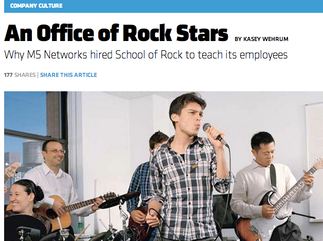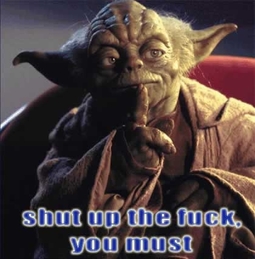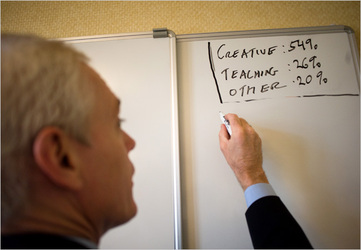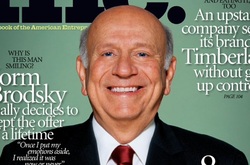
In my experience, Eric’s skepticism is the norm.
How high should learning be on the priority list?
You can learn business. My journey building M5 was all about accumulating knowledge to be a better entrepreneur, manager, and leader. This blog is to help me keep some of the notes from that trip, and sharpen my thinking for the next one.
 The story became company legend. Our CTO, let’s call him “Eric,” interrupted band practice to check a developer's status on an important project. Getting a lukewarm response, Eric shot back, “Is band practice really your highest priority now?” After he left, the group realized they had found their band name - “Is This My Highest Priority?” They went on to win the first battle of the bands with an electrifying rendition of “Seven Nation Army.” Inc. magazine published a photo of them practicing above their article on the program. In my experience, Eric’s skepticism is the norm. Knowledge acquisition is mostly an afterthought at work. Managers relegate learning programs to the province of HR, where executives have other priorities, like compliance or making the workplace equitable. Some companies run, “Welcome to your new job” boot camps, but learning curves are most often viewed as a one-shot climb. And most staff see themselves as educated - past tense.
How high should learning be on the priority list?
16 Comments
 “Most businesses take care of their shareholders first. We strongly believed it was employees first ..." - Barbara Anderson I recently spoke with Barbara Anderson, one of the first employees and a leader at the The Container Store for over thirty years. This company has been a favorite for a long time, partly because they invest 263 hours for each full-time employee's education. This was my first conversation with a founding exec, and I thought I’d write it up. Check out the wikipedia overview if you don’t know them. The Container Store, which invented a retail category, opened in 1978 and has grown steadily at 22.4%+ annual compounded growth rate to 63 stores today. Barbara told one story that underscored their success. After selling to retail-focused PE Leonard Green in 2007, The Container Store was the only portfolio company to stay in the black and not downsize during the Great Recession. They are a great proof point in the power of investing in people as a competitive advantage. The conversation underscored a few business design principles I believe in:
I get lots of agreement and nods when I quote Drucker, “Culture eats strategy for breakfast.” Culture is what every profiled CEO in the NYT’s “Corner Office” talks about. Culture is what the Admiral I met on the USS Harry Truman waxed on about as the key to his success. But often, people don’t know what it really means, or how to work on it, even though it is everywhere.
And I didn't either. Jack Daly once challenged me, “Do you have a culture by default or a culture by design?” “Um,” I thought, in 2003.  In 2005, my wife Julie ranked thumb-chewing (and the resultant callouses) as my #1 most irritating behavior. Awesome. I like nothing better than to knock tasks off a prioritized list, but I did not know how to fix this sub-conscious self-cannibalization. Cayenne pepper spray, perhaps? Later that year, I randomly met Scott Weiner, PhD and hypnotist, at a networking event. I took a shot. He was so confident. “No problem," he said. "2-3 sessions, $450 a pop and consider it done.” It worked. Completely. Almost. Seven years later after I decided to sell and then leave my company, I relapsed. This summer I called Scott. “A tune-up?” No problem. One session. Consider it done.
It worked again. Scott and I have talked a little bit about his practice. He juxtaposes hypnosis to meditation. Some forms of meditation empty the mind. Hypnosis, on the other hand, suggests specific instructions. It is not far from “Inception.” I’m not writing this blog to promote hypnosis. I’ve had three friends try. Two were satisfied, one wasn't. I'm writing because I boil down hypnosis' near-magical effectiveness in to three worthwhile principles that I’ve since applied other places and you might try them too.  “Human beings may be miserable specimens, in the main, but we can learn, and, through learning, become decent people.” ― Orson Scott Card, Ender's Game Josh Waitzkin commented that one of the most impactful features of the M5 Jiu-Jitsu program was that the CEO was wearing a white belt, symbolizing that I was learning with everyone else. My modeling of thirst for knowledge helped foster this value in the company. And as I’ve often said, a staff of people who love learning is like a CEO’s wish for more wishes. The tightest bottleneck for us was not capital, or market demand, or technical limitations - it was me, the team, and our own capacity to get stuff done. So I’d better be working on that. Besides, improving my own skills on company time was genuinely fun, a borderline guilty pleasure. C’mon, the training montage is the best part of every action movie - epitomized by one of the best sci-fi books of all time, now a movie, Ender’s Game. (Get it, the game is the end?) I thought I’d use four concrete skills as examples. Working on these paid big dividends for me. This is not ... "If you don't know where you're going, it doesn't matter which way you go." - Cheshire Cat, Alice in Wonderland "Those people that find higher purpose to business than earning money are the ones making all the damn money." - Greg Glassman, Founder and CEO of CrossFit I used to ask new hires if their prior company had a mission. They almost all said yes. When I asked, "Was it relevant in day-to-day life at the company?" They would say no. It was usually on a poster somewhere and too long, not memorable. Research backs the widespread lack of relevant, authentic company missions. For example, a quantitative study by Christopher Bart points out, “The overall conclusion is that, in any sample of mission statements, the vast majority are not worth the paper they are written on and should not be taken with any degree of seriousness.”
Mission statements were not part of MBA dogma when I was an student in the 90s. Instead, Wharton taught about the overarching purpose of creating shareholder value. We debated the perils of straying from the primacy of wealth-creation. I was left wondering why the legendary Dilbert Mission Statement Generator (sadly no longer online) didn’t just repeatedly spit out the one-size-fits-all mission, “Make Money.” However, I've found purpose to be one of my absolute favorites in the leadership toolkit. Used wisely, it creates shareholder value and provides some benefit to society. You might think of mission as the ball. Share price or market share or another more traditional method of  Yesterday I heard that the head of product I hired didn't last the year. Product innovation was one of the hardest things for me to scale. One of the purposes of this blog is to clarify my mistakes so I can avoid them next time, so I thought I'd tackle this topic. Besides, I just read Eric Ries' "The Lean Startup," which also reminded me of how hard this is, and suggested an answer. To continue the setup, I met an old friend who just closed his startup. They spent one year, solved many technical hurdles building a cool app, but never got any real market traction. The entrepreneur's decision pleased his VC, as most companies linger for much longer. The developers who built intensely all year, pleased not so much.
 “Your true strategy is not what's written on your strategic plan; but what's written on your weekly calendar.” - Verne Harnish “Creative 53% Teaching 28% Other 19% ... That, he explains, is a running tally of how he’s spending his time ... These aren’t ballpark guesstimates. Mr. Collins, who is 51, keeps a stopwatch with three separate timers in his pocket at all times, stopping and starting them as he switches activities.” - 2009 NYT piece on Jim Collins It is week three of my blank-page life. I’ve never had fewer places I have to be. So what am I doing? One big theme has been how I manage time itself. Having a clear, unobstructed calendar to shape has lent itself to experimenting with some time management ideas that I think would translate back to work. So below is not only what I'm filling my weeks with, but how. "Making Time" is the number one obstacle to learning. I saw it again and again with people at M5 that just couldn't show up to do the work needed move their careers ahead. But when something is really important - like a family member in the hospital - somehow we manage to keep everything going. I often think of getting off the cardio-machine in the gym when it hurts, but I don't, because I already did the work of getting my butt on the thing. There's a lot to be said for showing up where and when you want to, and it isn't always easy. So, to try and make sure I'm controlling my time during this period of limitless distraction, I baked a pie chart.  “Entrepreneurship is the home ownership of this century.” - Chris Dixon Norm Brodsky is one of my heroes. We met about ten years ago, before he sold City Storage. I copied some of his stuff immediately: keeping the bonus plan game-like and super-simple, bringing prospects to the office for an 85%+ close rate. Norm’s contributed heeps to the art of business. He evangelizes and educates through speeches, his Inc column, and his two books. He and Rob Levin host Scotch night, one of my favorite gatherings. He’s given back hugely to Brooklyn, starting with hiring and training locals and giving back to his then-struggling now-booming community of Williamsburg. He believes that you can learn business. My kind of guy! Norm says his “one” business superpower is spotting trends... Recently, Russell Sarder, author, and CEO of NetCom Learning sat down with our Dan Hoffman to discuss building a strong leadership team. Dan discusses his leadership style and what makes a good leader in general. Enjoy! |
Categories
All
Archives
March 2014
|